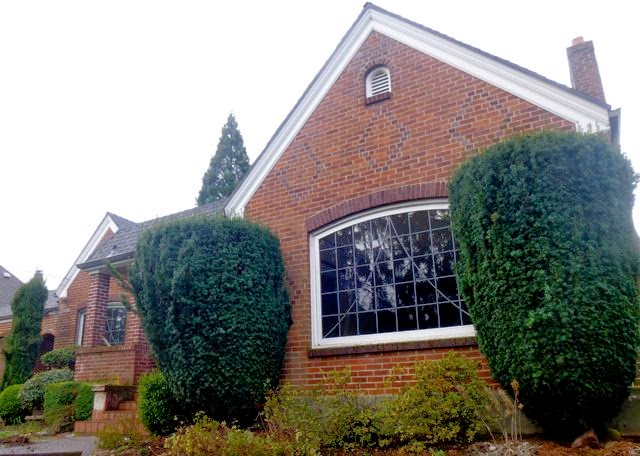 |
| Ready for the Dumpster: This house, pictured a few days before demolition, is already gone, taking with it 65 years of neighborhood history. |
This unique, well-designed house at 3419 NE 35th Place had the misfortune to be sited on a large lot in 1949 in a desirable neighborhood and then put up for sale last fall. Developers bought it, and the neighbors strived, with the neighborhood association's help, to delay the demolition. For a time, it worked. They won a 120-day stay of the demolition, but it didn't last because the city helped the developers work around it.
Why would the city bother to grant such a stay only to negate it a few weeks later? What a waste of everyone's time and resources, except for the developers anxious to get wrecking.
As with Wally Remmers's oversize, noncompliant building on Fremont between 44th and 45th avenues, why is the city so actively working against neighbors' interests? Every elected official at City Hall, too, seems to have checked his or her conscience at the door while turning a blind eye to these devolving influences in the neighborhoods. Leadership like this probably would have defeated the jackhammering of a freeway and thwarted the creation of Waterfront Park in 1974, and given the nod to subdividing Wilshire Park in the 1940s.
 |
| Did leaded glass and unique brickwork give way to a load of MDF and vinyl? We'll know soon. |
The other day I was in the local coffee shop and overheard a visitor from Southern California rhapsodizing over the houses of Beaumont-Wilshire. He raved about their individual character, their collective presence, the charm, the design, the materials! I smiled, because that's what I love about this neighborhood, too. As the creator of the Vancouver Vanishes project notes, there's value in this "first-growth architecture," the stories they hold, and the quality of materials and craftsmanship. Otherwise we're destined to live in homogenous metropolises. For Portland, a city that prides itself on a "green" ethos, it's worth remembering, too, that the greenest house is the one left standing, not carted to the landfill.
To see what numerous other cities (Portland conspicuously missing) have done to protect their neighborhoods, check out this online compendium compiled by the National Trust for Historic Preservation.
No comments:
Post a Comment